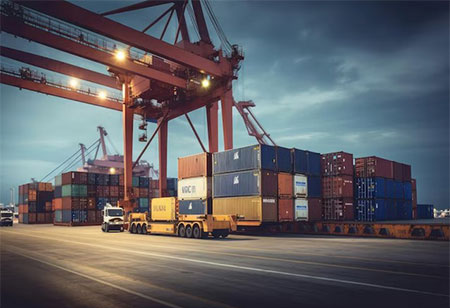
Shipping heavy equipment worldwide requires precision when dealing with logistics.
It can be a burdensome task, especially if you don’t understand the ins and outs of heavy equipment shipping.
Thankfully, A1 Auto Transport Inc., experts in shipping heavy equipment for 30 years are here to give their take on the current state of logistics and heavy equipment shipping industry.
Ready to learn?
Let’s get started.
What is Heavy Equipment Shipping?
Heavy equipment can mean many things, from cranes to excavators, but typically heavy equipment is equipment that is at least 40,000 pounds or more. This means that enormous objects are being transported every day, and it requires special attention compared to a simple box from UPS.
These shipments create all sorts of problems, from oversized and overweight problems to having to disassemble or even load by crane. Oversized requires drivers to gather permits, and drive on designed roads.
Specialized trailers are also utilized for safe shipping and handling. In some scenarios, escorts are even required to make sure that the equipment is handled safely, as it is a risk for anyone loading and offloading the heavy equipment.
Flatbed Trailers
A typical flatbed trailer can hold a load of up to 48,000 pounds. While most heavy equipment clocks in around 40,000 pounds, another 8000 pounds can easily be taken up without any effort. The downside of flatbed trailers is that if it doesn’t fit onto the trailer completely, then the load will not be able to be transported.
Of course, flatbed trailers can only be utilized for domestic shipping. Since these types of trailers can’t be transported overseas, they are limited in their means of transport. If the load does fit however and it’s not oddly shaped, it’ll likely be shipped on a flatbed trailer.
Thankfully, using heavy equipment shippers like A1 Auto Transport Inc relieves you of any problems during the transport as every- thing is taken care of by experts.
Specialized trailers
For other oddly shaped equipment that doesn’t typically fit onto a flatbed, a step-deck or drop-deck trailer can be used. They can legally haul anything up to 10’6’’ tall and can be equipped with ramps to drive equipment on and off said trailer.
What’s great about these types of trailers is that it does not require a crane for loading. If your equipment has wheels, then loading and unloading makes it super easy. Compared to a flatbed truck, it’s a preferred method for anything that can be wheeled onto the trailer.
Cargo shipping
Cargo shipping is the most typical form of international shipping for heavy equipment. Big boats are capable of handling huge loads. As long as the said equipment can fit into the cargo container (8ft (2.43m) wide, 8.5ft (2.59m) high), then shipping is a breeze.
Some containers also can have the sides removed or the top to make room for oddly shaped objects. Cargo shipping can take quite a long time to arrive, so do plan if you need your heavy equipment on the same day.
Load on/Load Off Ship
Load-on/Load-off ships are ships that load everything with a crane, hence the term “load on/off”. This type of shipping is a bit more expensive as logistically, it can take quite some time to load hundreds, and sometimes thousands of items by crane.
Roll on/Roll Off
Another way to tackle overseas shipping for heavy equipment is with ships that are typically used be vehicles. Roll-on/roll-off ships drive the vehicles directly onto the ship, making it super easy.
The downside of this type of shipping is that normally cranes aren’t utilized. If your heavy equipment does not have wheels, then it won’t be possible to utilize the budget-friendly roll-on/roll-off method of heavy shipping.
Conclusion
The current state of the logistics and heavy equipment shipping industry reflects the intricate challenges associated with transporting massive machinery globally. A1 Auto Transport Inc., with its three-decade expertise in this field, sheds light on the nuances involved in heavy equipment shipping.
Navigating the realm of heavy equipment shipping demands a profound understanding of the diverse machinery involved, ranging from cranes to excavators, each weighing at least 40,000 pounds. The complexities arise not only from the sheer size and weight but also from the need for specialized handling, permits, and, in certain cases, escorts to ensure safe transport.
Various shipping methods cater to the diverse needs of heavy equipment trans- portation. Flatbed trailers, suitable for domestic shipping, carry loads up to 48,000 pounds, provided they fit entirely onto the trailer. Specialized trailers like step-deck or drop-deck trailers accommodate oddly shaped equipment and ease the loading and unloading process for wheeled machinery.
We use cookies to ensure you get the best experience on our website. Read more...